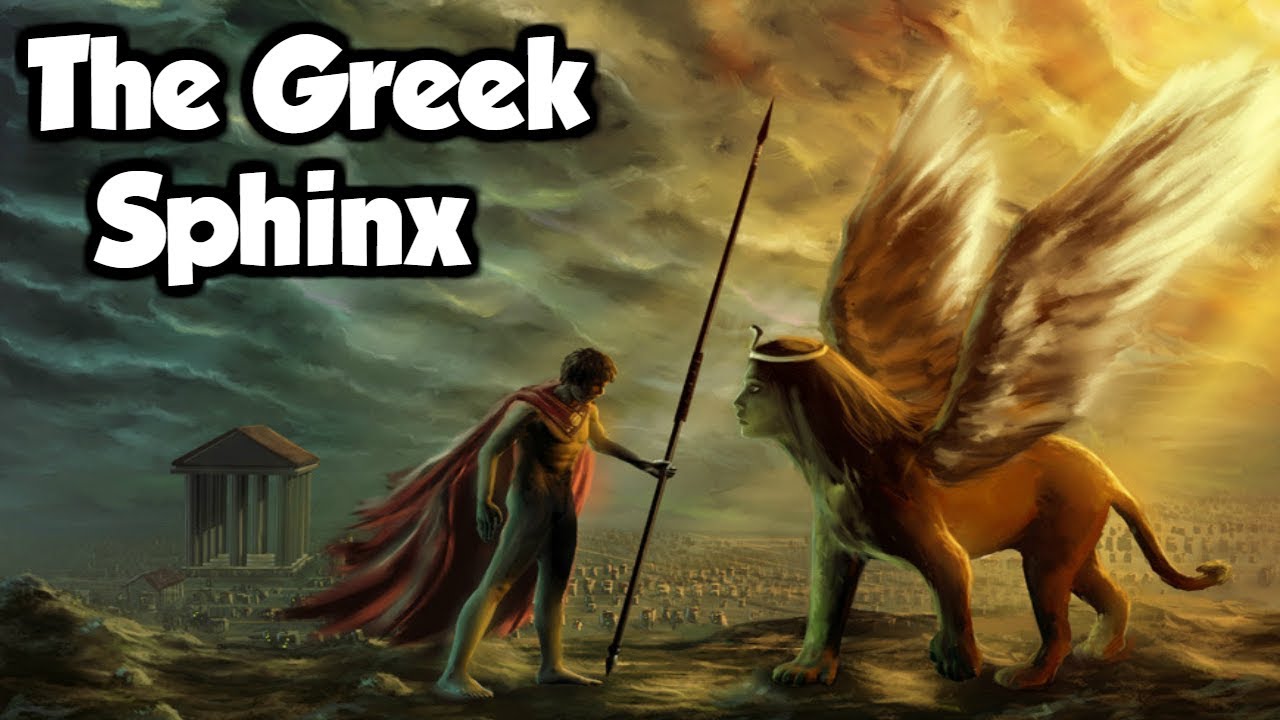In “The Greek Riddle Sphinx: Explained,” Mythology & Fiction Explained delves into the fascinating story of the Sphinx in Greek mythology. Known for terrorizing the ancient city of Thebes, the Sphinx posed riddles to travelers, with a deadly consequence for those who answered incorrectly. The video explores the physical appearance of the Sphinx, its origins, and its role as the bringer of bad luck and destruction. It also delves into the famous riddles the Sphinx would ask, and the brave and clever hero who finally bested her: Oedipus. Join Mythology & Fiction Explained as they unravel the captivating tale of the Greek Sphinx and its encounter with Oedipus.
The article also touches upon variations of the story, including a retelling by French poet Jean Cocteau. From the physical features of the Sphinx to its role in ancient Greek mythology, Mythology & Fiction Explained provides an engaging and informative analysis of this iconic creature. So, if you’re interested in learning more about the Sphinx and its encounter with Oedipus, be sure to watch the video and share your thoughts on this intriguing myth.
The Greek Sphinx: Overview
The Greek Sphinx holds a prominent place in Greek mythology, captivating generations with its enigmatic presence and imposing appearance. This mythical creature, often depicted as a lion with the head of a human, has stirred the imagination of countless individuals throughout history. Its role, origins, and purpose have been the subject of much speculation, making the Sphinx a central figure in the rich tapestry of Greek mythology.
Appearance of the Sphinx in Greek mythology
The Sphinx is commonly portrayed as a creature with the body of a lion and the head of a human. This unique combination creates an unsettling and uncanny presence, as the human-like face offers an unexpected contrast to the powerful and majestic physique of the lion. Its wings, often depicted in various artistic representations, further emphasize its divine and otherworldly nature. The Sphinx’s appearance is intended to inspire awe and fear, leaving a lasting impression on all who encounter it.
Meaning of the word ‘Sphinx’
The word “Sphinx” itself carries significant meaning in Greek mythology. Derived from the Greek term “sphingein,” meaning “to squeeze” or “to bind,” the word encapsulates the Sphinx’s role as a guardian figure, testing the wit and intellect of those who cross its path. The Sphinx challenges individuals to think deeply and solve complex riddles, embodying the essence of puzzles and enigmas.
Origin of the Sphinx
The origin of the Sphinx can be traced back to ancient Egyptian mythology, where the creature is believed to have emerged as a symbol of power and protection. Over time, the concept of the Sphinx made its way into Greek mythology, evolving into a distinct entity with its own unique traits and purposes. The exact process of this evolution remains a subject of debate among scholars, but it is clear that the Greek Sphinx embodies a fusion of Egyptian and Greek mythological elements.
Role of the Sphinx in Greek mythology
In Greek mythology, the Sphinx plays a pivotal role as a terrifying and formidable guardian. Positioned at the entrance of Thebes, it poses a riddle to those seeking passage into the city. This riddle serves as a test of wit and intelligence, challenging individuals to decipher its meaning and provide a satisfactory answer. The Sphinx’s purpose is to ensure that only those worthy and capable can enter Thebes, effectively safeguarding the city and its inhabitants from potential threats.
The Riddles of the Sphinx
The Sphinx is renowned for its riddles, which have intrigued and confounded countless individuals. These riddles are not mere brainteasers; they possess deep symbolism and require profound insight to solve. One of the most infamous riddles posed by the Sphinx is as follows: “What creature walks on four legs in the morning, two legs at noon, and three legs in the evening?” This riddle challenges the very nature of human existence and reveals the intricate relationship between time and physicality.
Consequences for incorrect answers
The Sphinx is not a forgiving creature; it does not tolerate incorrect answers to its riddles. Those who fail to solve the Sphinx’s riddle are met with a swift and merciless fate. The consequence of an incorrect answer is death, as the Sphinx pounces upon its unfortunate victim, tearing them apart with its immense strength and sharp claws. The Sphinx’s ruthless determination to protect Thebes renders it uncompromising in its judgment, leaving those who were unprepared to face its challenge to meet a grim fate.
Oedipus and the Sphinx
Perhaps the most well-known encounter with the Sphinx is the legendary tale of Oedipus. In this myth, the Sphinx had been terrorizing Thebes, refusing to let anyone pass unless they solved its riddle. Oedipus, driven by his determination and intellect, successfully solves the riddle, answering, “Man, who crawls on all fours as a baby, walks on two legs as an adult, and uses a cane in old age.” By unraveling the hidden meaning of the Sphinx’s riddle, Oedipus not only saves himself from a gruesome fate but also delivers the city from the Sphinx’s reign of terror.

Different Versions of the Story
Variations in the story of Oedipus and the Sphinx
While the story of Oedipus and the Sphinx is widely recognized, there are variations in its telling. Different authors and playwrights have added their own interpretations and embellishments, enriching the tale with their creative flair. Some versions emphasize the importance of Oedipus’ intelligence and ability to solve the riddle, while others focus on the tragic fate that awaits him as a result. These variations serve to highlight the multidimensional nature of Greek myths and the enduring appeal of the Sphinx’s enigma.
Jean Cocteau’s retelling of the story
One notable retelling of the story of Oedipus and the Sphinx comes from the renowned French artist and playwright, Jean Cocteau. Cocteau’s adaptation, titled “The Infernal Machine,” provides a fresh perspective on the myth, intertwining elements of the Sphinx’s enigma with Oedipus’ internal struggles. Cocteau delves into the psychological depths of the characters, exploring their fears, desires, and the complex interplay between fate and free will. Through his retelling, Cocteau breathes new life into the timeless myth, inviting audiences to delve deeper into the enigmatic world of the Sphinx.
Conclusion
The Greek Sphinx stands as an enduring symbol of mystery, wisdom, and power in Greek mythology. Its appearance, meaning, and role in the intricate tapestry of legends have captivated generations, leaving an indelible mark on both ancient and modern culture. From its origins in ancient Egypt to its trials and encounters with mortal heroes like Oedipus, the Sphinx continues to fascinate and challenge our understanding of the human condition. So, the next time you encounter a riddle or find yourself pondering the secrets of life, remember the enigmatic presence of the Greek Sphinx, and embark on your own journey of intellectual discovery.
